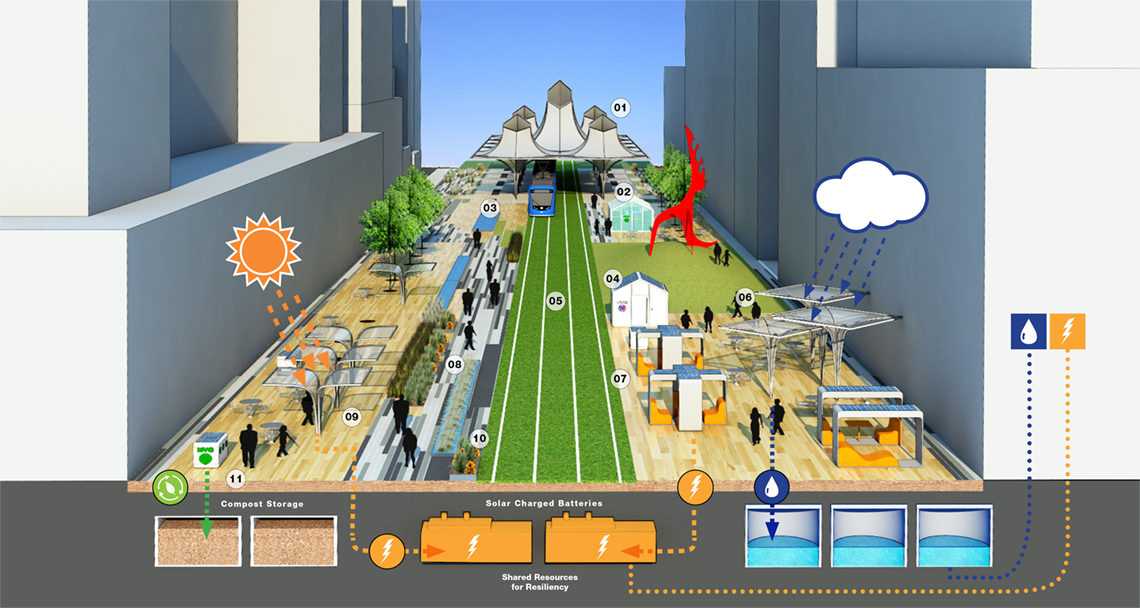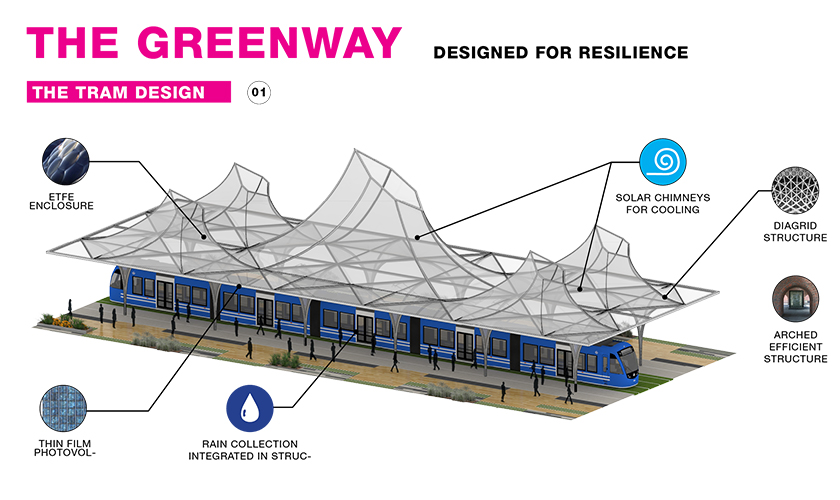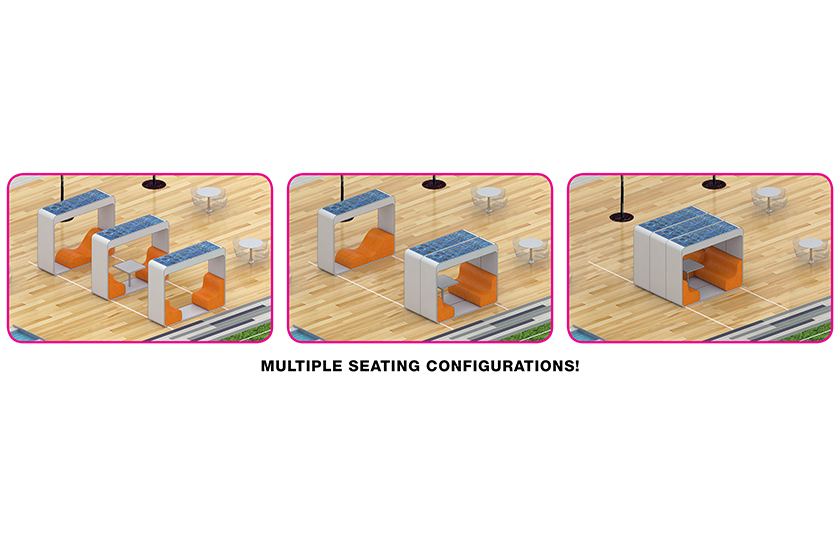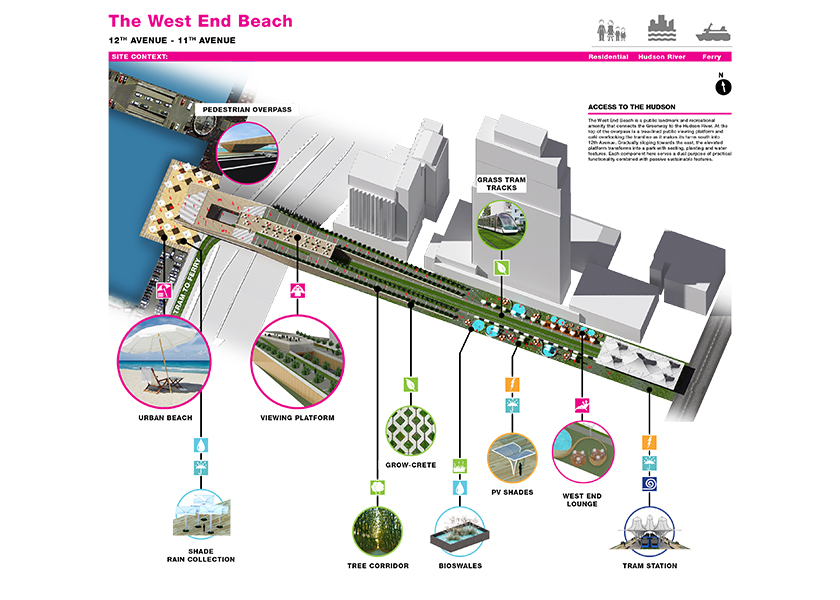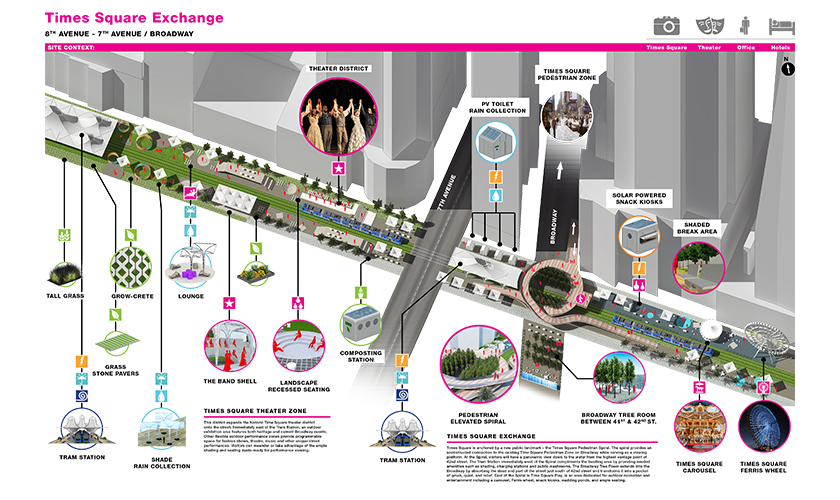42nd Greenway
42nd Street, NYC USA
The 42nd Greenway is our concept to transform one of America’s most iconic streets into the world’s most sustainable, vibrant, and community-driven parks. New York’s rapidly growing population corresponds to a demand for more public space and better transportation in neighborhoods across the city. Vision 42 presents an opportunity to develop a revolutionary precedent for urban revitalization, development, and sustainability.
The Vision
A design language based on the proportions of the New York City grid is utilized in the development of the Greenway, allowing for a modular system of customized park components to fit within the new grid of the park. This system allows for a diverse variety of design options, easy maintenance, and seasonal or event based programming. An integrated smart-phone app allows both guests and neighbors to connect directly to the Greenway and actively participate in appropriating their park throughout the seasons.
Community
The 42nd Street Greenway is designed to enrich and inspire its immediate context. Landmark sections such as Times Square, Bryant Park, the United Nations, and the New York Public Library contain site-specific features such as viewing platforms, elevated pedestrian connection paths, reading rooms, performance areas, and sculpture gardens. Residential districts in the west side are designed to encourage an active and healthy lifestyle – containing an urban beach, recreational areas, and an extensive urban farm. Transportation hubs such as the Port Authority and Grand Central Station are transformed into a large open art gallery with vast lawn spaces, abundant seating, and a rotating curation of art.
Sustainability + Resilience
Every component of the park serves a dual purpose; shading devices collect solar energy and rain, pools double as bio-swales purifying runoff, landscaped hills become storage for compost, tram stations create areas of cooling with solar chimneys, etc. This fully self-sustaining park is directly connected to adjacent infrastructure; utilizing its excess energy, clean water, and recycled waste to feed into surrounding neighborhoods.
Team: Leon Lai, Eric Tan, Nicolai Schlapps



